Story of Hartalika – Marathi Festival
Story of Hartalika
Read Hartalika Story Marathi – हरतालिका माहिती आणि कथा
Ganesh Ganapati is very much loved by the Hindus and hence very popular.” Ganapati is encluded in the ” Dev Panchyatan ” (Selected fIve Gods).Gana is a group. One who is the leader (Adhipati) of the group is Ganapati. The Annual festival of this Ganapati falls on the 4th day (Chaturthi) of the month of Bhadrapada.
The origin of the word ‘ Ganesh ‘ .He is a leader of three important virtues. He is an Adipati or leader of Satva, Raja and Tama; He is Gunesh, means Ganesh. He is distinct from other gods, since he is partly of a human physique and partly of elephant.
He may not be physiologically beautiful, but possesses the beauty of mind and intellect, which is more important. This is what is implied in this idol of Gajanan.
Story of Hartalika: Four hands, trunk and big flat ears also convey specific meaning. Big ears digest only that knowledge, which is worth, rest should be thrown. Small eyes show critical view of things. Trunk means sensing of everything. Shri Gajanan has one full and one broken teeth. Faith (shraddha) and half wisdom are the indications. One can afford to be less intellect, but he should have self-faith (Atma shraddha). Four hands suggest the patience over passion and vices. Big belly is indicative of the storage of everything. Shri Ganesh has small legs, which suggest that nothing should be done hurriedly but with patience and slow speed. Shri Ganesh is very much fond of ” Modaka ” (Sweet). Moda means joy (Anand). This preparation with high dietary values is liked by Lord Ganesh.
Ganpati Atharva sheersha describes Ganpati in an elephatic manner
Story of Hartalika: ” God with one tooth, Goad (Ankush) in hand, and a noose. In one hand, he holds broken tooth, and blesses with the other hand. His flag bears the picture of mouse. He is red in colour with flat ears. He has applied Red sandal layer all over his body. He is always worshiped with red colour flowers. He shows mercy on his devotees (Bhaktas), he runs the business of this world; he is at the root of nature. One who sincerely meditates this God is the greatest of all Yogis “.
Story of Hartalika: The importance of Ganesh and his pooja was inherited by the Hindu Aryas from the Anaryas. When the Arayas migrated India, few groups of them used to worship the Elephant, since it was a huge animal and thus the tradition was set. Ganesh was their rural deity. The pooja used to be performed under the tree in villages. They might be sprinkling blood in those days (Abhishek). Its modern transformation is application of Red-sandal layer. Combination of Red lead and kumkum resembles sprinkling of blood in the ancient days. When the Aryas migrated India, they gradually coopted with the Un Aryas, and accepted some of their deities, Lord Ganeha is one of them. Some vedic scholars regarded the carnation of Ganpati as second feature of Bruhaspati (Guru).
Story of Hartalika: There are different stories about how Ganapati – Ganesh , Vignaharta, Gajanan came into being, told in our mythology.Most popularly known is of Parvati asking her son Ganesh to protect the entrance of the bathroom, when the former was taking her bath. Lord Shiva arrived there but was obstructed by Ganesh. In the heat of anger Shiva chopped Ganesha’ head. Mata Parvati was in deep tears.Lord Shiva planted elephant’s head on Ganesha’s body and made him alive. Ganapati has his face of elephant, why it is so? This question has been variedly answered. Few believed in Bhutan where ” BHOOT ” was community , which used to wear masks on thier faces and wandered in procession.
Shiva and Parvati used to wear clothes made of the elephants skin. They had some of their disciples, in the places, where the elephant was regarded as an important animal. They used to worship that animal and also wear the mask of its face.
When the Aryas settled in India, they and the Dravids combined and mutually accepted Ganesh as a deity.
Ganapati , as on today , is accepted by alll of us as a son of Shiva-Parvati.He is the destroyer of all evils, he is Siddhi Vinayak, is known as Chintamani, Ek Danta, with fourhands. In the TRETAYUGA, Ganesh was born to Parvati on the 4th day (Chaturthi) of Bhadrapada. He killed demon called Sindhu. It is sad that Ganesh married to the daughters of Bramdadev, whose names were Ruddhi (Siddhi) and Buddhi.
Vighanaharta is one face of Lord Ganesh. Why he became Vignaharta? Why is he worshipped at the beginning of any auspicious or festive occasions? There are few stories. Mouse or Mushak is a vehicle of Shri Ganesh. It is believed that when Ganesh rides on the back of mouse, he reduces his weight. Mouse, commonly lives underground in darkness and hence symbolizes darkness. He came on the open ground. Luminuous Lustrous Ganpati, by sitting on the back of the mouse, the darkness vanishes. There is a story about this in Ganesh Parana.
Krouncha was a Gandharva, During the meeting in Indrasabha, he unknowningly hit Yamadeo with his leg. Yamdeo was furious and cursed Krouncha ” You will form the body of Mushak (Mouse) “. The same Gandharva is Mushak. He started roaming in the Ashrama of Parashar Rishi, became a nuisance by eating the grains there. Parashar Rishi prayed for god Ganesha, who caught hold of mouse. Mouse surrendered. Ganesh asked Mushak to call for the blessing. Originally a Gandharva, this Mushak was rude, and asked Lord Ganesh to call for blessing. Ganesha wisely ordered him to become his vehicle. Since then, he became Ganesha’s vehicle. We always see the mouse sitting near the feet of Lord Ganesh in any picture or statue. Chaturthi is generally observed as a day of worship of Ganapati. It is said that no one should kill mouse on this day.
In ancient times, there used to be many hardships and difficulties for the Rishis in their work. To protect these Rishis Rudra incarnated a lustrous boy. On seeing this boy, Parvati got annoyed and cursed him ” You will be a Gajamukh Lambadara ” (with elephant face and big belly). There upon Lord Shiv created some Vinayakas, who were armed with weapons. Bramhadeo told Lord Shiv ” Let all these Vinayakas be under the leadership of this boy “.
Lord Shiv then named his son as Gajamukh, Vinayak and Ganesh; All these Vinayakas would be his (Ganesha’s) servants. Ganesh will attain first place for worship in every occasion. Those who will not observe this would face difficulties.
Thus Ganesha became Vignaharta. He is always prayed and worshipped in the first instance at the beginning of every festive or auspicious occasion. Ganesha’s idol or bettlenut placed on rice spread over on surface signifies the presence of Lord Ganesha. At the entrance of every house there is a poster of Lord Ganesha. Ganapati is given, the invitation for any auspicious occasion or ceremony, always in the beginning.
Normally there are two chaturthi days falling in a span of one month and the custom of observing these days been practiced, being the birthday of Lord Ganesha.
What we notice as Lord Ganesha’s idol of today, with all specifications, came into being when Ganpati Atharvasheersha was written. We do see different moods and modes of Ganesh idols since 6th century. In the beginning Lord Ganesha had only two hands, there after Ganesha came out with 4 hands with Gajamukh and a big belly. Rarely, Ganesha is seen with his trunk twisted on the right side, otherwise it is twisted on left side. Ganesha with right side trunk is supposed to be very rigid in application.
At the foot of the Kedarnath, there is one Gauri Kunda where there is Mundakata Ganesh temple. StAarting from the Himalaya in the north to Rameshwara in the south there are innumerable Ganesh temples in our country. In almost every town, there is a Ganesh Temple. Ganesh also acquires an honor of Grama Devta.
” Ashta Vinayak ” in Maharashtra is very famous. Similarly there are sacred places where prominence of Ganesha is noticed, such as Ganapati Phule, Chinchwad, Kalamb, Sindkhed etc. With the spreading of Buddha religion outside India, the concept of Ganapati and its rituals, worship etc, got spread in China, Japan, Burma, Cambodia, Mexico, Turkastan and some other countries. Goddess ‘Janus’ in Latin culture has got resemblance with our Ganesha.
As mentioned above, Gajanana is more scientifically worshipped and prayed on Chaturthi day, which occurs twice a month, one is Vinayaki Chaturthi and the other is Sankashti. The Sankashti, which falls on Tuesday, is also known as ‘Angarki
Chaturthi ‘. On all these days, the Bhakta ganas observe fast.
Except in Bengal and Gujrat, the Ganesh festival is annually celebrated in Bhadrapada on the 4th day. Rich and poor, all take part in this celebration. Apart from performing pooja, Ganesh Idols are installed, surroundings are decorated, the idols are worshipped with red flowers. ‘ Durvas’ and ‘Modakas’ are offered as ‘Nevedya’ before Ganesha.
Ganesh idols are worshipped and immersed in water, after 1-5 days, 7 days and 10 days. In Bengal instead of Ganesha, the people there worship Ghant karna and Ghentu, who are supposed to be Shiva’s disciples. The kannada people call Ganesh chaturthi as ” Benkan Halla ” and the Telgu call it ” Pilleyar Chavati “. The Tamils call Gajanan as ” Tumbikai Alwar ” mean the Gajanan – God of Visom.
In the year 1899, Lokmanya Tilak made this festival a social one. He shaped this festival to cultivate spirit of nationalism and patriotism among the public. He wanted to bring the entire community under one thought and that was Nationality. He used this festival as a source. It first started in Pune, but subsequently got spread all over Maharashtra. Now it is even popular beyond this state. The festival is for ten days. On the last day known as ” Anant Chaturdarshi ” concept of immersing the Ganesh idols was largely accepted and the same is practiced now. In the city of Pune, the first honor of standing the emersion procession goes to Kasba Ganapati which is known as” GRAMDEVTA ” of this city then follows the idol of Kesariwada and so on.
During the pooja of Shri Gajanana, the importance is given to Durva and Shami leaves. There is a tradition of offering 21 durvas during the pooja. These durvas carry maximum medicinal values in the month of Bhadrapada. These leaves pacify the heat in our body and also are useful on stomach ace.
Some stories are told about the importance of Durvas and their relation with religious festivals. One of them is relating to Shri Ganesh also. One demon, by name of Analasur, used to be a nuisance to the gods. They surrendered before Ganesha and begged for protection. Ganapati reduced himself to the smallest size and swallowed
the demon.
However he developed tremendous heat inside his body. To reduce the agony of heat, the Manis offered a bunch of 21 durvas to Ganapati, which pacified him. From that time, these durvas became favorites of Lord Ganesha.
Story of Hartalika: Lord Ganesh blessed ” One who will offer Durvas to me, will attain the Punya (sacred attainment) worth performing one thousand Yad nyas “.
You may also like
Baby Ganesha | HD Wallpapers |
Aagman Pictures | Visarjan Pictures |
Fantasy Ganesha | Official Wallpapers |
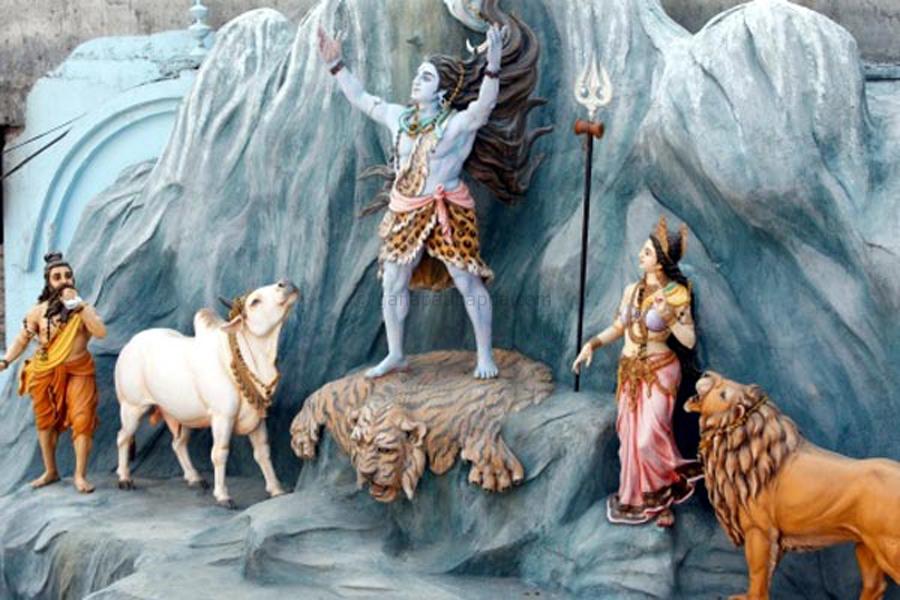
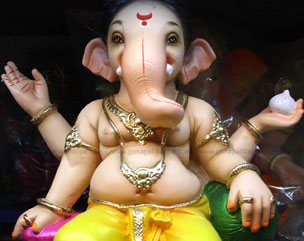
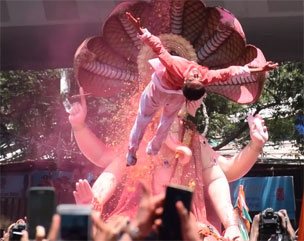
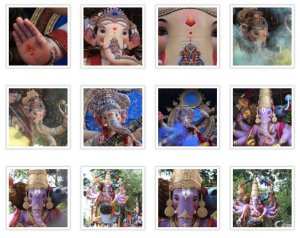
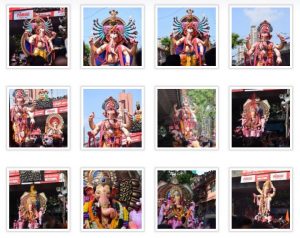
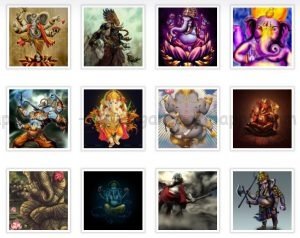
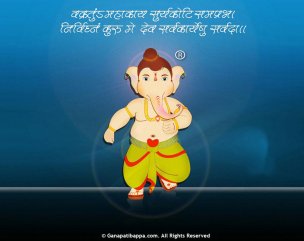




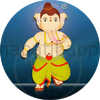
About the author